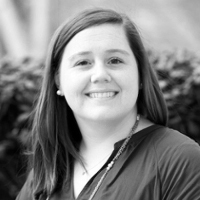Question
How does a child develop more than one language?
Answer
Bilingual language development is typically classified into two major categories: simultaneous bilingualism or sequential bilingualism.
Simultaneous bilingualism is defined as a child being, “exposed to both languages in their first few months of life.” (Goldstein, 2012, p. 7). Simultaneous bilinguals are generally exposed to both languages in more or less equal amounts. An example would be a family where one parent speaks Spanish exclusively to the child and the other parent speaks exclusively English to the child with the family living in an environment or community that utilizes both languages. The child receives input in both languages consistently early on.
Sequential bilingualism is defined as children who are, “first exposed to one language and then to the second one with significant variation existing in respect to the timing and conditions under which the second language is introduced.” (Goldstein, 2012, p. 7). Sequential bilingual children have developed their first language and then begin learning a second language. An example would be a child from Germany, who speaks only German, whose family moves to the U.S., and he begins to learn English through a program at his English-speaking school.
Generally, research has come to the consensus that the “cut-off” age for differentiating a simultaneous bilingual from a sequential bilingual is three years of age. A child learning a second language prior to three years of age would be considered a simultaneous bilingual and a child learning a second language after three years of age would be considered a sequential bilingual. (Paradis, Genesee, Crago, 2011).
Why does this matter to you as a speech-language pathologist? Whether a child is a simultaneous or sequential bilingual plays a part in what you should expect from the child. A child who is simultaneous bilingual may demonstrate more equal development of both languages where a child who is a sequential bilingual may demonstrate, at least initially, strength in their native language. It is vital to investigate the sequence of language acquisition of bilingual children prior to evaluating their speech or language skills to determine if a speech or language disorder is present.
This Ask the Expert is an excerpt from the course 20Q: Bilingual Service Delivery: Where Do I Start?, presented by Kelly Jackson, MS CCC-SLP.

